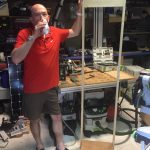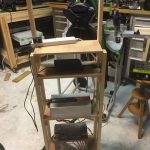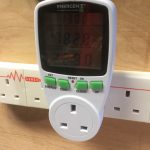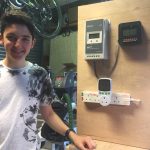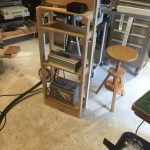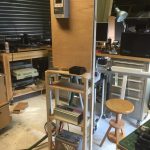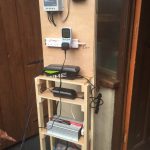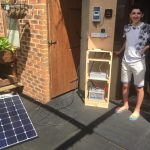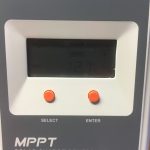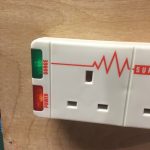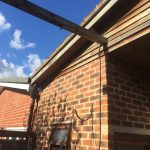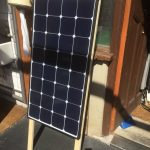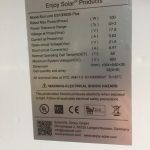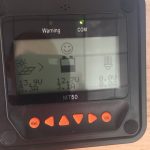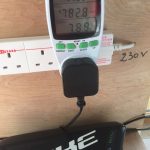 Just been recently thinking of using Solar Panels to provide power to recharge for my electric bike. The idea is to use a battery to store the electricity from the sun, use a DC to AC converter to power the bike charger which can charge the batteries of the bike.
Just been recently thinking of using Solar Panels to provide power to recharge for my electric bike. The idea is to use a battery to store the electricity from the sun, use a DC to AC converter to power the bike charger which can charge the batteries of the bike.
Given that I use the bike during weekends mostly, the speed at which the “storage battery” will charge is not a big problem. So I can charge the storage battery over a few days and use it during the weekend. I need to make sure the storage battery is big enough for a couple of charges of the bike.
I don’t want to go overboard in terms of spend and I want to explore some different technologies as I have noticed that the price points and the technology in general is evolving at a rapid pace.
I have ordered a few parts which hopefully will get me to a working prototype and I will be able to make a few tests.
[UPDATE] I bought a solar Panel obviously (a 100W – Monocrystal from SunPower), a charger controller, a 12V Car battery and finally a Pure Sine Inverter. The charger uses a MPPT algorithm and electronics setup which is supposed to be better at harvesting power than the usual PWM charger. I bought a standard car battery to start and might upgrade later to a Deep Cycle leisure battery, if this proof of concept works. The inverter is the device that will convert the continuous 12 volts from the battery to a 230V with 50HZ.
So far so good…
[UPDATE] It works ! I have recharged the bicycle batteries a few times now. There is no difference in charging duration. It is like simply plugging the charger into a wall socket. Just that the electricity is coming from the battery and through the inverter. There is no humming noise or heat generated etc…Obviously the battery itself discharges quite quickly given the amount of energy I drain from it. The official Bosch charger draws about 180W when it is in “full charge mode”, once the batteries are 80% charged, the charger adjust down the amperage to trickle charge the finish. The consumption drops to 40/60W and lower until Zero when fully charged.
I have also tried to use it with a couple of power tools. The latest being my Fein sander. It worked without issue at all. I started with a low speed first to ensure I was not drawing too much current on the inverter and then cranked it up. All fine.
Very pleased with this setup. I suppose, it would be possible to make all this gear fit in a smaller space and make it portable to move around. The big drawback it the fact that the car battery is so heavy in compare to the lithium batteries. It would be very expensive to make a solar system with a storage bank of lithium batteries.
What I have learned about this solar experiment is that most of the issue with Solar power is not so much generating the electricity but storing it for future use. Solar essentially trickles from the sky and we need to harvest it into batteries to be able to use it. The fact that the solar panels have 20% efficiency or 19% is a bit irrelevant if you can store it for the day you need it.
I will wait for the Tesla power walls…
[UPDATE – Aug 2016]
I have plugged a Raspberry Pi into the main inverter and it is now “on” all the time. I am planning to build a connection between the Raspberry Pi and the Solar controller so that I can track the energy generated and consumed by the overall system. I have found a few tutorials on the Net on how to connect this particular charger to a computer and will need to adapt it to the Raspberry Pi. So far, I am just making sure that the Rapsberry Pi can run all day all night all the time and not “burn” too much of the power from the battery.
Would also like to experiment with the ideal angle the solar panels should be. At the moment, I have laid them flat on the top of the roof structure. With a bit of browsing, it seems that I could improve the efficiency by having them angled at 40 to 50 degres and facing south, this might not be practical for my particular setup but it would be interesting to see how much more energy I could extract by changing those parameters.
Another long term project.


